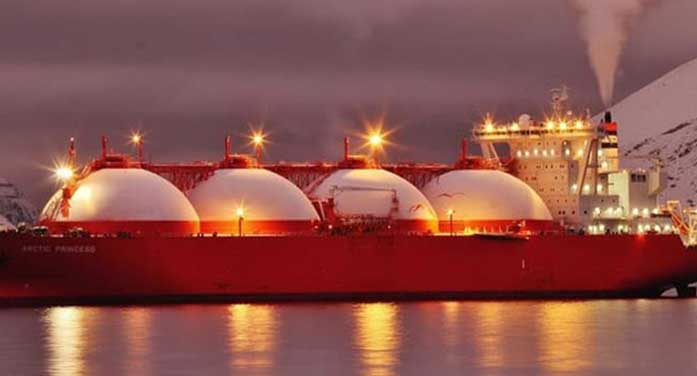 There’s been a big step forward for a major proposed Canadian liquefied natural gas (LNG) project that’s seen as an opportunity for economic reconciliation with Indigenous communities and help to reduce global greenhouse gas emissions.
There’s been a big step forward for a major proposed Canadian liquefied natural gas (LNG) project that’s seen as an opportunity for economic reconciliation with Indigenous communities and help to reduce global greenhouse gas emissions.
Partners in the Ksi Lisims LNG project, including the Nisga’a Nation, have applied for a 40-year LNG export licence and filed a detailed project description with regulators.
“The project has the potential to support the Nisga’a Nation and other Indigenous nations’ goals of responding to climate change while allowing for economic development,” the project description says.
Ksi Lisims would be a floating LNG project on B.C.’s northern coast, about two km from the Alaska border.
Its partners also include a consortium of British Columbia and Alberta natural gas producers called Rockies LNG and a subsidiary of Houston-based LNG developer Western LNG.
The project includes a natural gas pipeline originating in northeastern B.C. At full capacity, it would produce 12 million tonnes of LNG per year for exports primarily to Asian countries like China, Japan and South Korea.
| RELATED CONTENT |
| Canada missing a critical opportunity in the LNG market By Mark Milke and Ven Venkatachalam |
| Attempts to discredit LNG miss the mark By Brad Hayes |
| Canada’s energy strategy defies stark global realities By Terry Elam |
That makes it only slightly smaller than the LNG Canada project under construction at Kitimat, B.C., which will have capacity of 14 million tonnes per year in its first phase.
The Nisga’a Nation has been working since 2014 to develop an LNG project in its treaty territory, it says.
“The Nisga’a Nation, like most rural Indigenous communities, struggles with consistently lower employment and labour force participation rates. Currently, a number of employment barriers exist for Nisga’a citizens living on Nisga’a lands including geography, low population density, and jobs which are typically lower-income, lower-skilled, and more vulnerable to economic downturns,” the project description says.
“The direct and indirect economic benefits provided by the project will reduce social and economic disparities, improve the quality of life for all Nisga’a citizens, and enable the Nisga’a Nation to pursue economic self-determination.”
Initial estimates are that across Canada the project will provide 21,000 employment opportunities, $890 million in annual provincial and federal tax revenues, and approximately $2.5 billion in annual gross domestic product.
The Ksi Lisims LNG project will be designed to operate with net-zero greenhouse gas emissions, which is important to the Nisga’a Nation, it says. This will be achieved by using renewable hydropower from B.C.’s electrical grid, using low-carbon Canadian natural gas that’s subject to strong methane emissions regulations as LNG feedstock, and the short shipping time to Asian markets.
Global LNG demand is expected to nearly double in the next two decades, crossing 700 million tonnes in 2040 compared to 380 million tonnes in 2021, according to Shell’s most recent outlook.
Startup for Ksi Lisims LNG is targeted by the end of 2027. The project is expected to require federal and provincial review, as well as an assessment under the Nisga’a Treaty.
Deborah Jaremko is director of content for the Canadian Energy Centre, an Alberta government corporation funded in part by taxes paid by industry on carbon emissions.
Deborah is a Troy Media Thought Leader. For interview requests, click here.
The opinions expressed by our columnists and contributors are theirs alone and do not inherently or expressly reflect the views of our publication.
© Troy Media
Troy Media is an editorial content provider to media outlets and its own hosted community news outlets across Canada.

